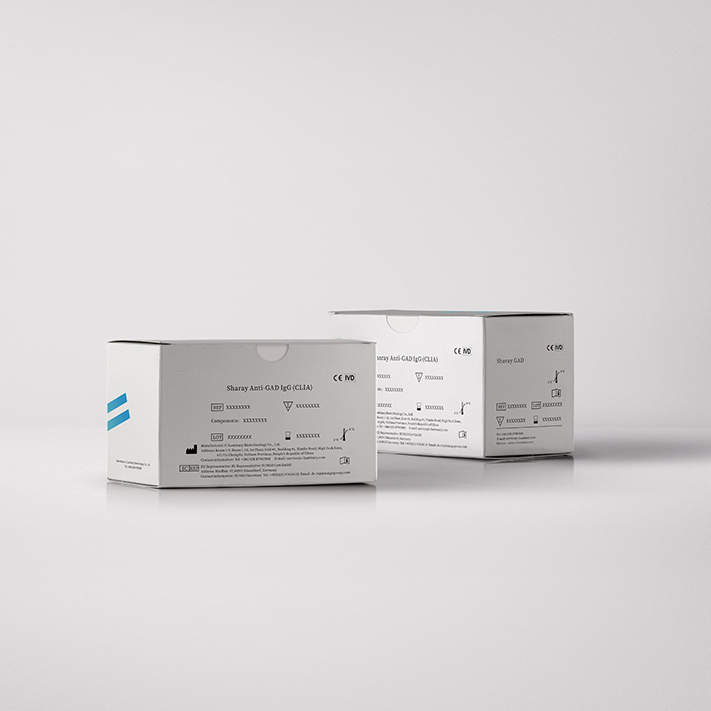Type I Diabetes Test Kit, C-luminary biotechnology
|
Chemiluminescent Solution(Autoimmune Diseases) |
||
|
Series |
Product Name |
Abbr |
|
Type Ⅰ Diabetes |
Anti-Glutamic Acid Decarboxylase Antibody |
GAD |
|
Anti-Islet Cell Antibody |
ICA |
|
|
Anti-Tyrosine Phosphatase Antibody |
IA2 |
|
|
Anti-Insulin Autoantibody |
IAA |
|
|
Anti-Zinc Transporter 8 Antibody |
ZnT8 |
|
Glutamate decarboxylase (GAD) is mainly found in central neurons and islet cells in vertebrates and humans. Two isoenzymes (GAD85 and GAD67) exist, GAD67 is only present in human islet B cells. Anti-Islet Cell Antibody (ICA) is the only specific antibody that can specifically destroy β cell components of islets. Positive ICA can predict severe β cell damage, which can be used as one of the high-risk indicators of type 1 diabetes.
Anti-Tyrosine Phosphatase Antibody (IA2), also known as islet cell-associated protein-2. Combined detection of anti-protein tyrosine phosphatase antibody and anti-glutamate decarboxylase antibody can improve the sensitivity of autoimmune T1DM diagnosis. T1DM patients with positive anti-protein tyrosine-phosphatase antibody have the clinical characteristics of an earlier age, a short course of disease, low islet function and high demand for exogenous insulin.
The concentration of Anti-Insulin Autoantibody (IAA) is inversely proportional to the patient’s age, and is highest in patients younger than 5 years of age. It is speculated that when T cells mediate the destruction of B cells, the three-dimensional conformation of endogenous insulin changes, resulting in antigenicity and eliciting antibody responses. IAA appears in type 1 diabetes and preclinical patients, and the positive rate of IAA is 40-50% in diagnosed type 1 diabetes patients, and IAA can also be detected in adult patients with latent autoimmune diabetes. Positive IAA can also occur in insulin autoimmune syndrome and thyroid disease, and some normal people are also positive. Therefore, positive IAA has no specificity for the detection of islet disease, but it can indicate the autoimmune tendency to develop islet disease.
ZnT8A is a newly discovered specific antibody for the diagnosis of type 1 diabetes, its positive rate is next to that of anti-GAD antibody in the initial cases of type 1 diabetes. Detection of ZnT8A will help to assess the risk of type 1 diabetes and has high diagnostic and prognostic value for the first-degree relatives of diabetic patients.
Professional technical engineer dedicated to guide you
According to your actual needs, choose the most reasonable overall design and planning procedures
